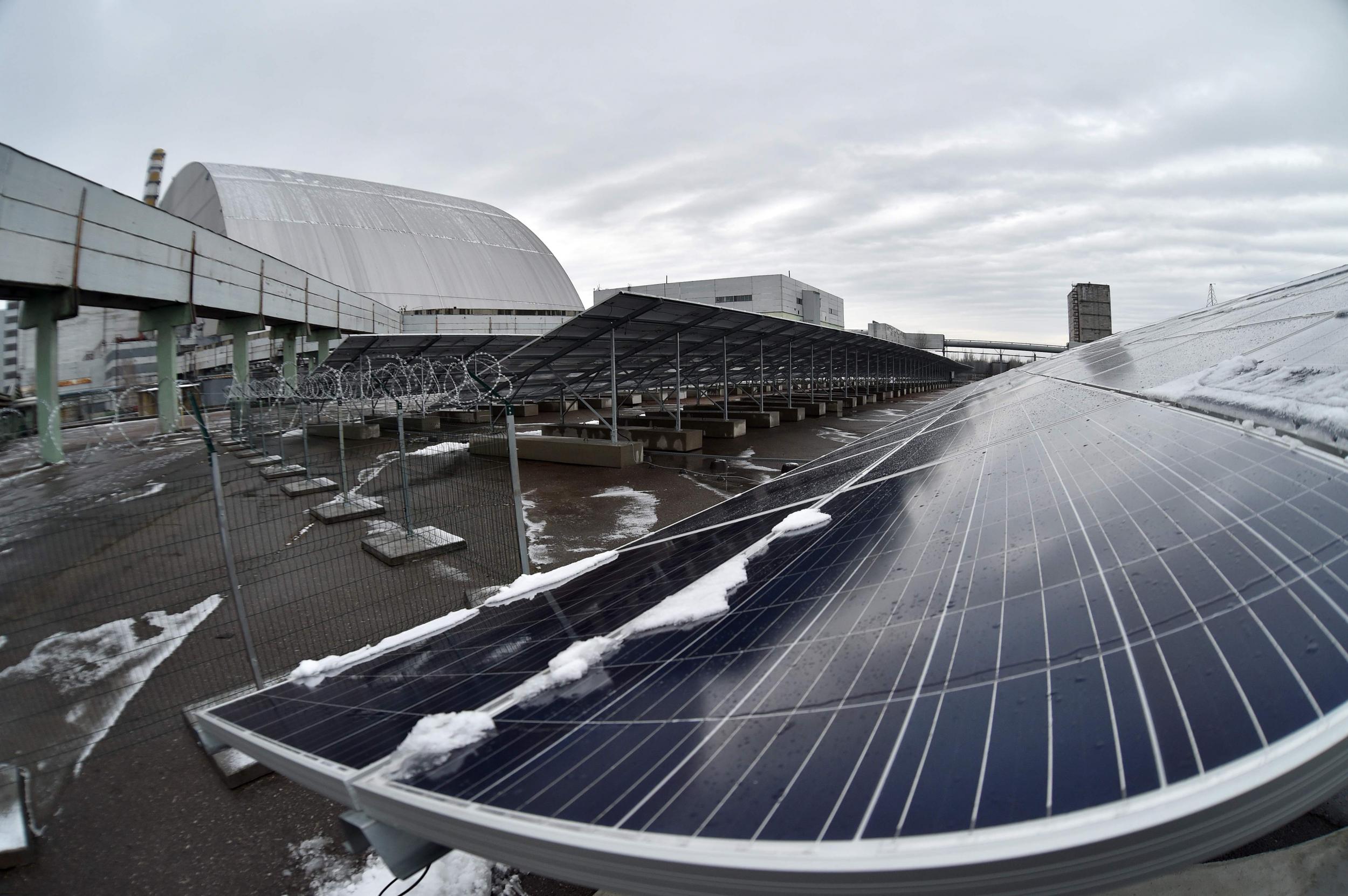Solar power plant to open at site of Chernobyl nuclear disaster
€1m energy facility constructed metres from damaged reactor that spewed radioactive cloud across Europe

Your support helps us to tell the story
From reproductive rights to climate change to Big Tech, The Independent is on the ground when the story is developing. Whether it's investigating the financials of Elon Musk's pro-Trump PAC or producing our latest documentary, 'The A Word', which shines a light on the American women fighting for reproductive rights, we know how important it is to parse out the facts from the messaging.
At such a critical moment in US history, we need reporters on the ground. Your donation allows us to keep sending journalists to speak to both sides of the story.
The Independent is trusted by Americans across the entire political spectrum. And unlike many other quality news outlets, we choose not to lock Americans out of our reporting and analysis with paywalls. We believe quality journalism should be available to everyone, paid for by those who can afford it.
Your support makes all the difference.A solar energy plant will begin operating within weeks at the site of the Chernobyl disaster.
The €1m (£889,000) facility, capable of powering a small town, has been built in Ukraine at ground zero of the worst nuclear accident in history.
The one-megawatt plant, fitted with 3,800 photovoltaic panels across an area the size of two football pitches, sits just 100 metres from the gargantuan steel “sarcophagus” that was placed over Chernobyl’s damaged reactor two years ago to lock in remaining fallout.
The defective reactor’s explosion in 1986 spewed a radioactive cloud over much of Europe and left large swathes of Ukraine and Belarus uninhabitable. The meltdown directly killed 31 people but is thought to have led to thousands more deaths.
About 115,000 people were evacuated from a 1,000-square-mile exclusion zone, turning the town of Pripyat, where the plant’s workers once lived, into a ghostly ruin of deteriorating apartment buildings.
The solar plant’s panels have been fixed to concrete slabs rather than installed in the ground as drilling and digging of region’s the still-contaminated soil is strictly forbidden.
“This solar power plant can cover the needs of a medium-sized village,” Yevgen Varyagin, head of Solar Chernobyl, the Ukranian-German company behind the project, told AFP. The company already operates a 4.2-megawett plant in neighbouring Belarus, which falls within the radiation zone.
The new plant is one of 60 proposals lodged with authorities since the Ukrainian government made land around Chernobyl available for solar power developments.
The site is already connected to the power grid because of its infamous nuclear plant.
Energy companies and Ukrainian authorities have looked to make use of the swathe of land around the disaster site after the damaged reactor’s new steel shelter was heaved into place in 2016, vastly reducing dangerous emissions.
“Bit by bit we want to optimise the Chernobyl zone,” Mr Varyagin told Bloomberg last year. “It shouldn’t be a black hole in the middle of Ukraine.”
Read more on solar panels
Join our commenting forum
Join thought-provoking conversations, follow other Independent readers and see their replies
Comments